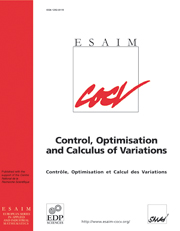Article contents
Mean variance and goal achieving portfolio for discrete-time market with currently observable source of correlations
Published online by Cambridge University Press: 18 June 2009
Abstract
The paper studies optimal portfolio selection for discrete time market models in mean-variance and goal achieving setting. The optimal strategies are obtained for models with an observed process that causes serial correlations of price changes. The optimal strategies are found to be myopic for the goal-achieving problem and quasi-myopic for the mean variance portfolio.
Keywords
- Type
- Research Article
- Information
- ESAIM: Control, Optimisation and Calculus of Variations , Volume 16 , Issue 3 , July 2010 , pp. 635 - 647
- Copyright
- © EDP Sciences, SMAI, 2009
References
- 4
- Cited by




